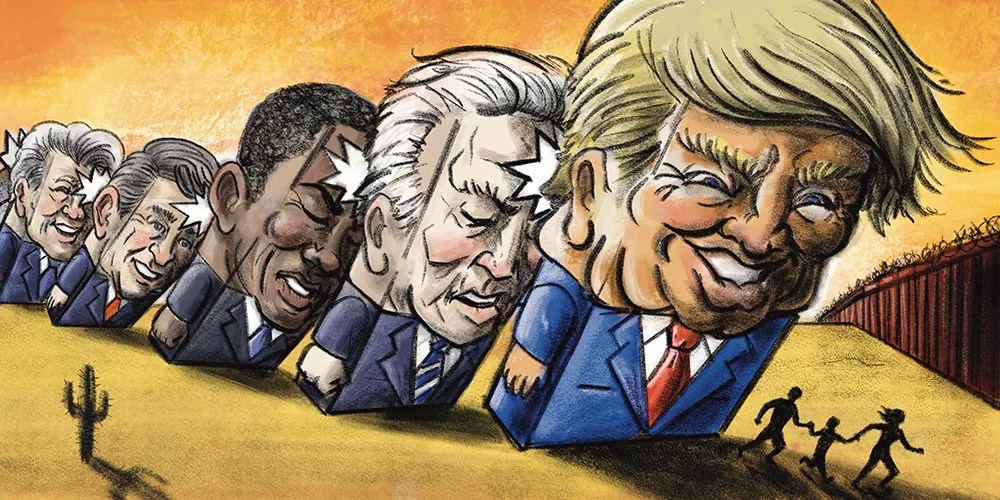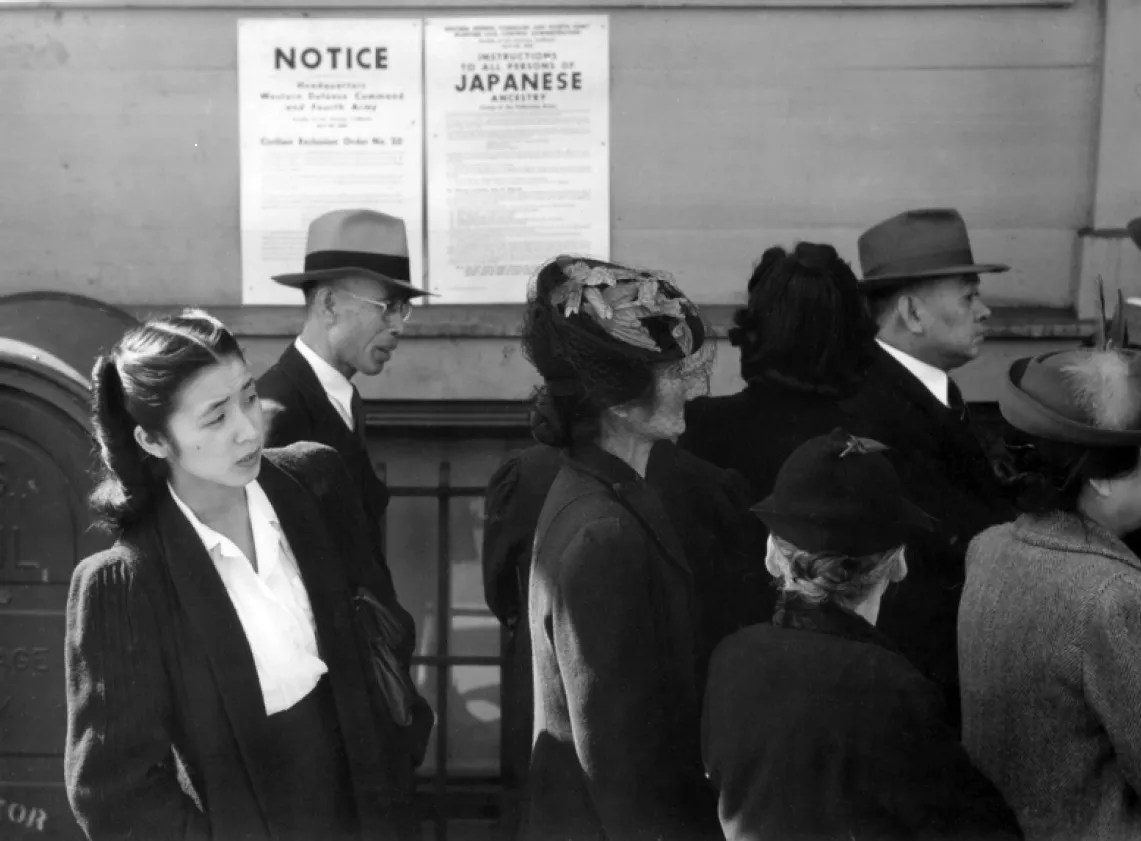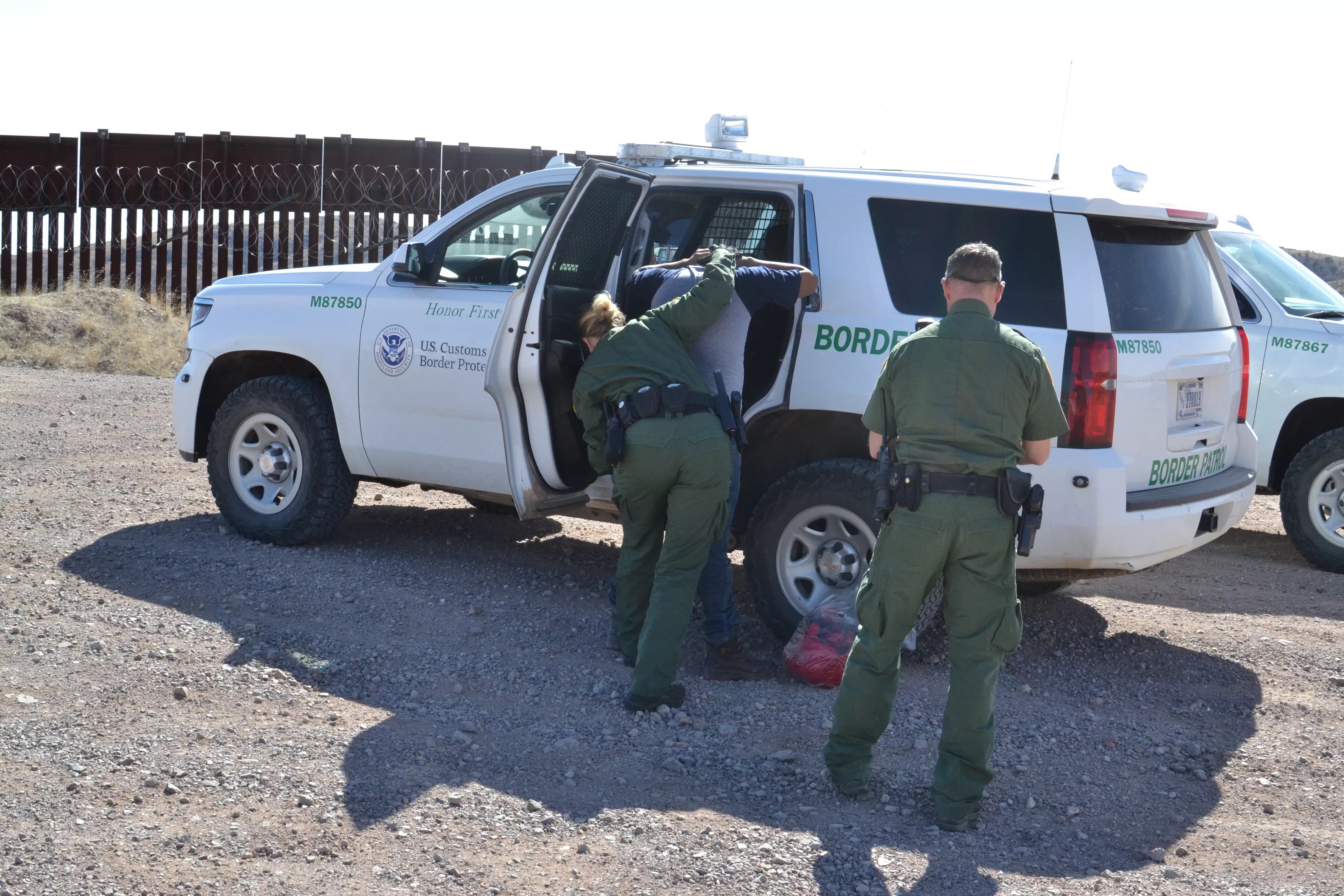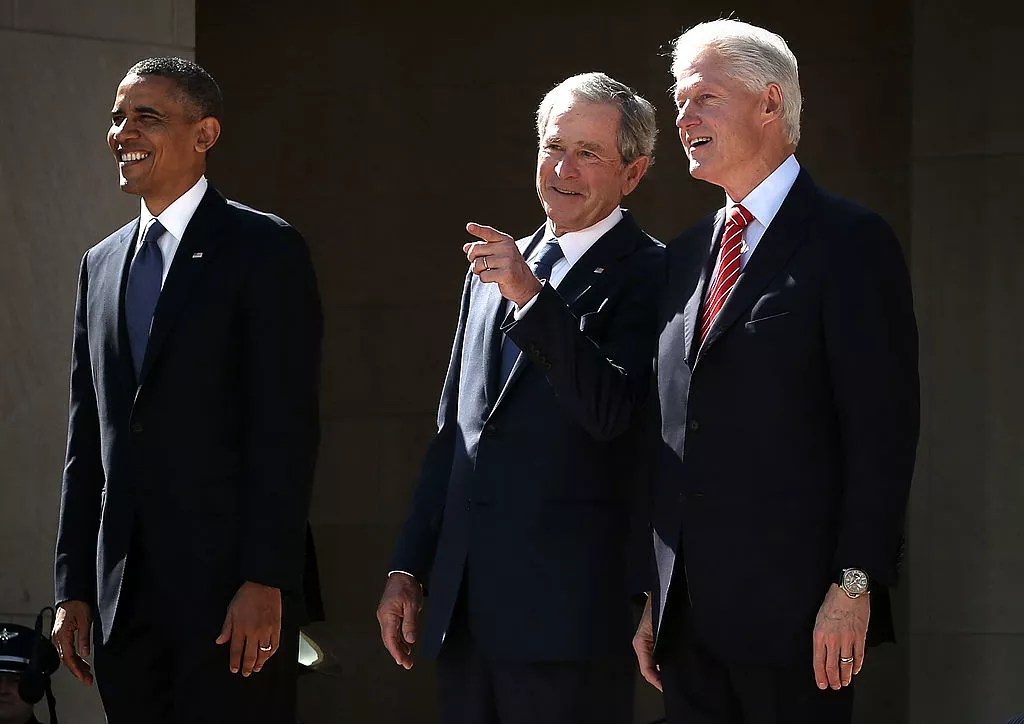
Illustration by Chas Coffman

Audio By Carbonatix
Last weekend, in Arizona and across the country, masses of people rallied to protest President Donald Trump and his administration’s inhumane, racist and power-hungry immigration policies. Their grievances might as well have been listed as Thomas Jefferson enumerated those of the American colonies in 1776 – though the object of Jefferson’s ire was a real king, not a wannabe one.
He has terrorized cities with immigration agents, plucking hard-working people from work sites, homes and schools.
He has trampled the guarantees of the Constitution, attempting to rewrite the definition of birthright citizenship and targeting immigrants and their advocates for the content of their speech.
He has denied due process to those he deems unworthy of being in the United States, defying judicial orders and shipping them to a foreign prison.
Will you step up to support Westword this year?
At Westword, we’re small and scrappy — and we make the most of every dollar from our supporters. Right now, we’re $20,000 away from reaching our December 31 goal of $50,000. If you’ve ever learned something new, stayed informed, or felt more connected because of Westword, now’s the time to give back.
He has threatened to use the military against American citizens, sending National Guardsmen and Marines to Los Angeles – over the objection of state officials – to quell protests against his regime.
All the signs that have been waved and slogans that have been chanted in opposition to Trump’s abuses (minus the torched Waymos) have been righteous. Trump has indeed stoked anti-immigrant fervor and wrenched the levers of the federal government against migrants to a greater degree than any president in the last half century. As the Arizona Watchdog Project showed last month in a piece by Beau Hodai, Trump’s administration appears to be following a disturbing playbook to dramatically reshape and place domestic law enforcement under his thumb, using the bogus threat of undocumented immigration to do it.
This, as millennials say, is not normal. But it’s also not unprecedented.
Many Americans riled up by Trump’s policies – and particularly the anti-Trump politicians using their opposition to them to burnish their images – could stand for a history lesson. Trump didn’t materialize from the ether, single-handedly turning the United States into a nativist, white supremacist nation that is violently hostile to immigrants. Rather, the U.S. has fostered such malevolent strains for decades, with both Republican and Democratic presidential administrations cranking up the pressure on immigrant communities.
In other words, Trump didn’t create America’s deportation machine. He’s just revving the engine.
And if a majority of Americans are serious about dismantling that machine, they’ll need to reckon with how presidents hallowed and reviled – Roosevelt and Eisenhower, Clinton and Bush, Obama and Biden – helped build it.

Franklin D. Roosevelt used the Alien Enemies Act to justify the infamous internment of 120,000 Japanese Americans during World War II. Donald Trump is attempting to use the same law to deport Venezuelan refugees without due process.
210-G-2A-572, Records of War Relocation Authority, Record Group 210; National Archives at College Park, College Park, MD
Our deportation nation
It’s tempting and maybe even comforting to see the Trump administration’s war on immigrants as an outlier, a paroxysm destined to fade once he finally leaves the national stage. But truthfully, hating on immigrants is as American as cherry pie.
Consider these shameful, all-American precedents. The 1882 Chinese Exclusion Act banned Chinese workers from entering the country for a decade on the basis of their nationality. In the 1917 Bisbee Deportation, more than 1,000 strikers in the southern Arizona town were forcibly removed to Columbus, New Mexico. In 1939, President Franklin D. Roosevelt refused to intervene on behalf of 900 Jewish refugees fleeing Nazi Germany aboard the oceanliner M.S. St. Louis, known as “the Voyage of the Damned.” Roosevelt also ordered the forcible internment of 120,000 Japanese Americans, using the same Alien Enemies Act that Trump has used to target Venezuelan refugees.
Both the First and Second Red Scares took aim at “ideological subversives” who more often than not were immigrants from Southern and Eastern Europe. The former included the so-called “Palmer raids,” named for the attorney general at the time, in which more than 6,000 people were arrested and hundreds of leftist leaders were deported. Nor was citizenship a bar to discrimination. In 1919, the federal government stripped famed anarchist and feminist Emma Goldman of her naturalized citizenship and deported her to Soviet Russia along with hundreds of others on a passenger ship dubbed “the Red Ark.”
In the Joseph McCarthy era in the 1950s, the Immigration and Nationality Act of 1952 deemed aliens affiliated “with the Communist or any other totalitarian party” to be “inadmissible.” The list of those supposedly excluded under this provision included Chilean poet Pablo Neruda, philosopher Michel Foucault and novelist Graham Greene. The Trump administration has invoked that same 1952 law in an attempt to deport pro-Palestine activist Mahmoud Khalil. Nor should one forget the Eisenhower administration’s 1954 mass deportation of Mexican laborers and farmhands, racistly dubbed “Operation Wetback,” in which hundreds of thousands of people were often caged like animals before being “returned” to Mexico.
These episodes weren’t aberrations as much as they were products of American democracy. In his seminal 2007 book “Deportation Nation,” Boston Law College professor Daniel Kanstroom wrote that the rights of deportees historically fare poorly when compared to the rights of criminal defendants. In the U.S., immigration law is largely civil and administrative, with federal courts deferring to the executive branch’s unquestioned “plenary” – i.e., absolute – power over immigration. The right to due process is one of the few that immigrants facing deportation regularly enjoy.
Like it or not, Kanstroom wrote, immigration is “a powerful tool of discretionary social control, a key feature of the national security state and . . . a mechanism of scape-goating, ostracism, family and community separation, and, of course, banishment.”
True, most of those episodes occurred decades and even more than a century ago. America is a work in progress, its well-intentioned defenders say, slowly shaping it into the country it is meant to be. The moral arc of the universe reputedly bends toward justice. Progress just happens.
Except that, as horrific as the Trump administration’s shameless and extremist anti-immigrant agenda is, his policies really aren’t all that far removed from those of his immediate predecessors. For decades – and especially in the last 30 years – American presidents have combined to create an immigration and border system that has had devastating consequences for migrants. It also acts as the proverbial canary in the coal mine when it comes to civil liberties. As Jefferson once wrote, “the friendless alien has indeed been selected as the safest subject of a first experiment, but the citizen will soon follow.”
Trump is leveraging that same immigration system for largely the same purpose. If anything, he’s just more honest about what he’s doing with it.

Border Patrol arrests a migrant who had jumped over the border fence near Nogales on February 12, 2019.
Steven Hsieh
A Constitution-free zone
In 1946, Congress amended the Immigration and Nationality Act to allow U.S. Border Patrol to operate within a “reasonable distance” from the country’s borders – later pegged at 100 miles. Wrapping ribbon-like around the U.S., that outline of the country contained more than 200 million Americans as of the 2010 Census. That strip covers every major city on the east and west coasts, as well as Chicago, Houston, New Orleans, El Paso and Tucson, among many more.
If Border Patrol stops you in any of those locales, say goodbye to your rights. You’re in what many call a “Constitution-free zone.” (The ACLU would surely argue otherwise, but such arguments become rather academic when you’re being detained by federal gendarmes.)
Within that 100-mile strip, Border Patrol operates checkpoints, conducts warrantless searches and seizes the electronic devices of those crossing the border and at international airports. Communities at the U.S.-Mexico border are awash in surveillance towers, fencing, walls, drones, license plate readers and facial recognition technology – all policed by a bellicose national force of more than 20,000 Border Patrol agents.
On the Tohono Oʼodham Nation, which traverses the Arizona-Mexico border, the Border Patrol acts as an occupying army. South of the Gila River, agents are at constant war with activists seeking to render aid to migrants, going so far as to illegally invade their encampments and sabotage jugs of water left out by volunteers for border crossers. The U.S. Attorney’s Office also periodically prosecutes modern-day Samaritans who take to heart the Biblical command to “show love to the alien.”
The Border Patrol’s viciousness knows no bounds. Case in point: In the waning days of the Biden administration, Border Patrol agents stationed near the California-Mexico border staged a three-day operation more than 300 miles north in Bakersfield, targeting farmhands, arresting 78 people and terrorizing the entire community. According to the Santa Barbara Independent, Border Patrol agents pulled over a U.S. citizen hauling a trailer full of gardening equipment and slashed his tires when he declined to surrender his truck keys. A Border Patrol spokesperson told a San Diego news outlet the operation made Bakersfield “a safer place.”
Such an episode is a direct product of what some have called the “Border Security Industrial Complex,” which a succession of presidents have had a hand in creating.
A 2021 analysis from the nonprofit Migration Policy Institute revealed that in Fiscal Year 2000, prior to the 9/11 attacks, the U.S. Immigration and Naturalization Service had a budget of $4.3 billion, with just a portion of it dedicated to immigration enforcement. After 9/11, Congress created the Department of Homeland Security, which oversees Customs and Border Protection (of which the Border Patrol is a part) and ICE.
By Fiscal Year 2020, according to MPI, the budget for immigration enforcement, now housed within Homeland Security, was $25.1 billion – “28 percent more than the $19.5 billion directed to the principal federal criminal law enforcement agencies.” According to a report from the nonpartisan National Immigration Forum, the GOP’s “One Big Beautiful Bill” would increase CBP funding by $60 billion over the next four years, while ICE would receive $75 billion. Regardless of party, the funding for immigration interdiction only goes in one direction: up.
The question is merely by how much.

Past presidents — including, left to right, Barack Obama, George W. Bush and Bill Clinton — are as responsible as anyone for building the deportation machine that Donald Trump is now weaponizing.
Alex Wong/Getty Images
The imperial presidency
Given that illegal immigration is neither an economic nor a security threat to the nation, the insanity of U.S. border and immigration policies in the modern era should be self-evident. So is their cruelty, which was obvious long before Trump started ranting about emptied insane asylums and Mexican criminals.
During the Clinton administration, the Border Patrol adopted a policy of sealing the border at El Paso and San Diego, funneling migration through the brutal Sonoran Desert, with deadly consequences. Instead, Clinton INS commissioner Doris Meissner admitted in 2000 that Clinton’s deterrence policy didn’t work. “We did believe that geography would be an ally to us,” she said. “It was our sense that the number of people crossing the border through Arizona would go down to a trickle once people realized what it’s like.” Estimates of those who perished in the Arizona desert since 1998 number close to 10,000. No one knows for certain how many have died.
Clinton compounded the problem by backing the North American Free Trade Agreement, forcing small Mexican farmers to compete with subsidized agribusiness in the U.S. As Arizona State University’s Cronkite Borderlands Project wrote, “Rural farmers left Southern Mexico in droves and migrated north, spurring increasing numbers of undocumented immigrants to the U.S. from Southern Mexico states.” Effectively, Arizona became a death trap for Mexican migrants.
Clinton’s immigration legacy also includes the 287(g) program, created by the Illegal Immigration Reform and Immigrant Responsibility Act of 1996. The program, which cross-deputizes local law enforcement to act as federal immigration agents, was viewed by both Democrats and Republicans as a “force multiplier.” Democratic Arizona Gov. Janet Napolitano lobbied for the addition to the program of the Maricopa County Sheriff’s Office, led by Joe Arpaio, with a disastrous outcome. Arpaio once had the largest 287(g) force in the nation, and his agency’s abuses of the 287(g) authority led to a civil rights lawsuit and a judge finding the sheriff’s office guilty of widespread racial profiling. The Obama administration eventually canceled Arpaio’s 287(g) street authority, but ICE agents still screen arrestees at the Maricopa County jail to this day.
Republican President George W. Bush was perceived by some as an immigration moderate who pushed for a legislative compromise on immigration reform. But his foreign policy and immigration enforcement sins far outweighed any unrealized policy goals.
Bush lied to the American public about invading Iraq, a country that had nothing to do with the 9/11 attacks. His prevarications countenanced torture at Guantanamo Bay and Abu Ghraib and at black sites across the world, with the CIA using “extraordinary renditions” to transfer suspected terrorists to countries eager to allow waterboarding and other “enhanced interrogation techniques.” Bush’s illegal actions in the Iraq War paved the way for the forced removal of undocumented aliens to hellholes such as El Salvador’s infamous CECOT prison.
Though forgotten now, Dubya had his own mass deportation plan, “Operation Endgame,” tasking ICE’s Office of Detention and Removal with “the removal of all removable aliens” by 2012. If that sounds ridiculously ambitious, well, it was. Predictably, it didn’t happen. The Bush administration did vastly expand the 287(g) program, which signed its first local law enforcement agreement after Clinton left office. By 2011, there were 72 agreements in place, including Arpaio’s.
Under Bush, ICE conducted large-scale raids on worksites around the country, arresting and deporting thousands of undocumented workers, often decimating the small towns where they lived and labored. In 2008, ICE rolled out its “Secure Communities Program,” creating a vast database against which an arrestee’s fingerprints could be checked for deportable offenses, no matter how minor. According to a 2021 Migration Policy Institute report, by January 2013, Secure Communities “was in effect in all 3,181 law enforcement jurisdictions in the country.”
Like his predecessor, Obama embraced the imperial presidency, using military drones to execute supposed enemies of the state. Obama’s moral compass was similarly shaky when it came to addressing the 11 million people in the U.S. who lacked legal status. When he came to power in 2009, echoing the popular Latino catchphrase “Si, se puede” and with Democratic majorities in both houses of Congress, his administration declined to take up the cause of immigration reform. He spent his political capital to pass Obamacare, and then used his presidential authority to deport more than 3 million people during his time in office, earning him the moniker “Deporter in Chief.”
As he was running for re-election in 2012, Obama threw some of his Latino supporters a life raft, initiating the policy of Deferred Action for Childhood Arrivals, which protects undocumented immigrants brought to the country as children from deportation. But it was an administrative action and not a legislative one, meaning another president can reverse it, as Trump has already once attempted. It’s as if Democrats lacked the imagination to envision a world wherein the enemies of freedom would use their best efforts against them.

Donald Trump’s administration has claimed many immigrants are gang members and terrorists — often on the basis of flimsy evidence and without due process — sending hundreds to an infamous prison in El Salvador, a country led by Trump ally Nayib Bukele (left).
Win McNamee/Getty Images
Testing the boundaries
That’s not to say Trump’s immigration policies and rhetoric aren’t different. They are. He’s turned American immigration enforcement up to DEFCON 1.
As Cochise Regional News and Phoenix New Times reported last month, internal Project 2025 documents lay out a plan to use a phony immigration crisis to create a Commander of Homeland Security Operations, appointed by the president, with direct control over the nation’s military and local and national law enforcement apparatus.
Trump seems to be calling new plays from that playbook with each passing week. Since taking office in January, the Trump administration has deliberately stoked a wave of nativism that includes: pausing visas for international college students, reinstituting an expanded travel ban from mostly Muslim countries and sending an additional 3,000 active-duty troops to the nation’s largely tranquil southern border.
The government is also using a 60-foot strip on the U.S. side of the border, known as the Roosevelt Reservation, to circumvent the 1878 Posse Comitatus Act, which restricts the use of the military for domestic law enforcement activities. As a result, migrants have been hit with “trespassing” charges, though whether those charges will stick remains an open question.
Stephen Miller, Trump’s chrome-domed, white nationalist policy guru, has openly toyed with the idea of the President invoking the Insurrection Act, which would green-light using the military for local law enforcement purposes – a line that’s been crossed to some extent recently in Los Angeles and elsewhere. Miller repeatedly has belittled the Fifth Amendment’s right to due process and suggested that the administration may suspend habeas corpus, which the Constitution says can be done only “when in cases of rebellion or invasion the public safety may require it.”
Due process and habeas corpus are such bedrock guarantees against false imprisonment that they predate the Constitution by centuries. Though the Trump crowd envisions abrogating these legal safeguards for undocumented residents, the Constitution refers to “persons” and “people” when it comes to these rights, not “citizens” and “non-citizens.” Without due process and writs of habeas corpus, a U.S. citizen could easily be subject to immigration enforcement and removal. Add to this slippery slope the Trump administration’s unconstitutional wet dream of revoking birthright citizenship for millions of Americans – enshrined in the 14th Amendment – and suddenly the rights we hold so dear begin to seem as impermanent as Vice President J.D. Vance’s eyeliner.
The Trump administration is already testing the boundaries. Tasked by Miller with arresting 3,000 undocumented persons per day, armed immigration agents have rounded up undocumented aliens in broad daylight in cities as diverse as Phoenix, Nashville and New York, zip-tying harmless men, women and children who showed up on time for immigration hearings. ICE has reportedly hauled people away from their workplaces, chased farmhands through the fields and detained high-school kids and pregnant moms. What’s more, they’ve regularly done so wearing masks and without identifying themselves, as if they were LARPing their “Sicario” fantasies.
Then there’s the $6 million Trump paid to El Salvador dictator Nayib Bukele to accept and essentially permanently imprison nearly 300 people expelled from the U.S. on the flimsiest of accusations of gang affiliations. After numerous court rulings, the Trump administration finally returned one of those disappeared men, Kilmar Abrego Garcia, to the U.S., only to immediately slap him with ginned-up charges of human smuggling.
These abuses have sparked the national outrage that has engulfed the country and led to widespread protests, both planned and spontaneous, in recent months. More than a few have quoted the Emma Lazarus poem “The New Colossus,” which is (for now) mounted in bronze inside the pedestal of the Statue of Liberty. “Give me your tired, your poor, your huddled masses yearning to breathe free,” it famously reads.
A more realistic version was penned by rocker Lou Reed. It was released as part of his cynical “New York” album in 1989, years before our current immigration scares. Even then, the song held a mirror up to America’s hateful face, shoveling the nation’s unvarnished, rapacious cynicism back at it:
Give me your hungry, your tired, your poor I’ll piss on ’em
That’s what the Statue of Bigotry says
Your poor huddled masses
Let’s club ’em to death
And get it over with and just dump ’em on the boulevard
The original version of this story was published by the Phoenix New Times.